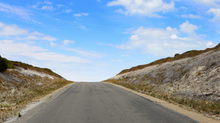“The Paleo Diet is Too Difficult”, Really?
- Bret McClellan
- Apr 16, 2015
- 3 min read
The most common complaint that I hear about the Paleo Diet is that it’s “too difficult.” And each time I hear it, I’m obligated to respond, “Eating meats, fruits and veggies is too difficult?” Obviously, there’s more to it than that. However, in today’s attention deficit-laden world where more than one quick catch phrase loses your audience, it gets the point across and gives the complainer some food for thought, so to speak.
Still, there is a (very) thin element of truth in the complaint, as initiating your new Paleo lifestyle, for most, does seem difficult at first. Several years ago I was (as usual) singing the Paleo praises to apotential convert when her friend chimed in: “I tried Paleo and it doesn’t work. You can’t eat any meat that’s not grass-fed, or drink diet soda, or have anything that comes in a package or box.” She then went on and on about all of the minutia associated with living the idealized, “perfect” Paleo lifestyle.
At the time, I was but a young caveman in my journey towards true Paleo-enlightenment. I therefore was unprepared for such criticism, and could only respond with a general acknowledgement that what she said was partially true, but only if you want to be an unwavering zealot about it. I must thank her, however, for providing me with more motivation to dig deeper into the details of my new lifestyle.
She didn’t know that you don’t have to be a zealot, or that you don’t have to stick to a strict protocol of denying yourself your favorite cheats. She wasn’t aware that you can at least partially offset the grain-fed meats by supplementing with high quality fish oil.
The truth is that the Paleo approach is very highly individualized. While we must alwaysbegin with exclusion of the most common culprits of digestive distress (grains, legumes, dairy, etc.), the end result is different for each and every one of us. I recommend the 30-day Paleo “Reset” to all clients, so that they can see for themselves the changes that come as a result of the elimination approach. Some may tolerate dairy or legumes better than others; and some may be able to stomach perhaps a bit more gluten than the high responders. But you simply will not notice the difference unless you’ve gone “clean” for an extended period of time.
At that point, self-experimentation (or n=1) can be initiated, during which you can try a little bit of your favorite (but suspect) foods, to see how you feel and/or how your body reacts. If you don’t react poorly, perhaps you’re better able than most to enjoy those foods.
The bottom line is that by far, most people experience tremendous results by implementing a fairly strict Paleo lifestyle for 30 days. This comes in the form of increased energy, elimination of (perhaps unnoticed) brain fog, and dramatic weight loss. At the end of those 30 days, most people elect to continue the lifestyle since it’s so transformative. However, many choose to utilize the 80/20 philosophy and keep reaping most of the rewards while enjoying their guilty pleasures. The choice is obviously yours, and certainly highly individualized. However, the difficulties the Paleo diet are grossly misunderstood and overstated, while the benefits are far-reaching and in all likelihood understated.
Schedule your Free 45 minute Autoimmune Breakthrough Session, Today: HERE
We are McClellan Natural Health, promoting wellness & nutrition. Our mission is to help you reclaim your health, naturally! We are here to help. If you have already been diagnosed with an AD, please call us for a consultation now at (770) 865-7232. You can also email us at camille@McClellanNaturalHealth.com, www.mcclellannaturalhealth.com.



































Comments